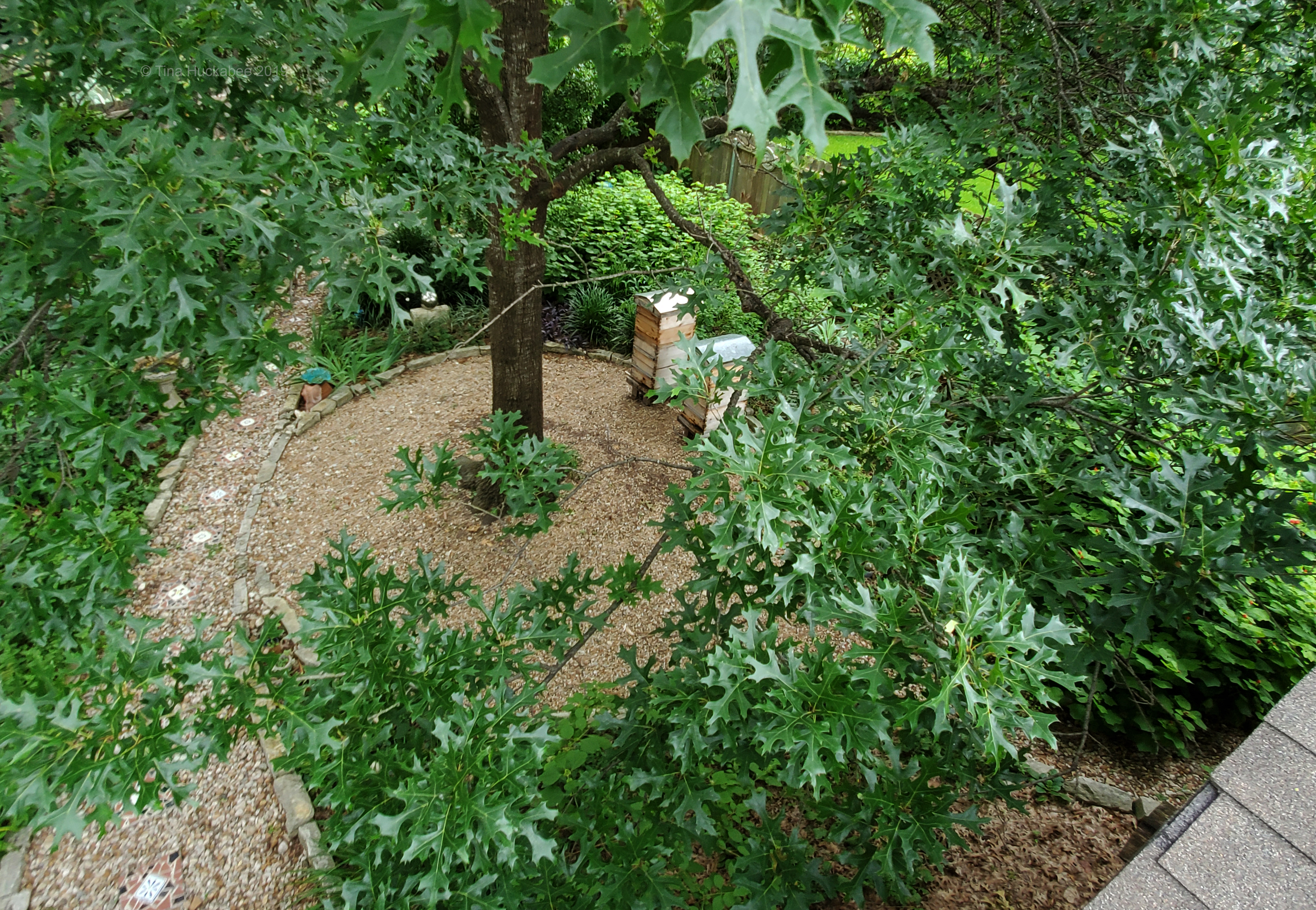Here in Austin, Texas, the weather has settled into the summer pattern of boringly bright days, warm-to-hot-temperatures, and plenty of humidity; the solstice is now a memory. There’s just no way around it–it’s summer, and as writer Al Bernstein said: Spring being a tough act to follow, God created June.
So what’s in the garden reflecting the shimmering June days? In a word: Daylilies. I say that, though I have only one type of daylily, planted in only one spot. Their cheery orange is, for me, a June thing every summer.

My mother-in-law gave to me a couple of daylily leaves with attached root 20 some-odd years ago. She wasn’t a gardener and I have no idea where she got hers, but they hadn’t bloomed alongside her driveway in many years. She insisted that they were lovely.
And she was correct.

Full and ruffly, I look forward to the blooms every June, though sometimes they appear as early as May or as late as July. I believe they’re a form of the Asian variety Hermerocallis fulva.
For years, I didn’t notice any pollinators at these blooms, but as I have paid more attention, I see a species of native bee who visits when these flowers open. A small, iridescent blue-green bee, it’s probably a Sweat bee, Genus Halictidae. The bees dive deep into the flower and it’s usually several minutes before they emerge; I have to be quick with the camera button!
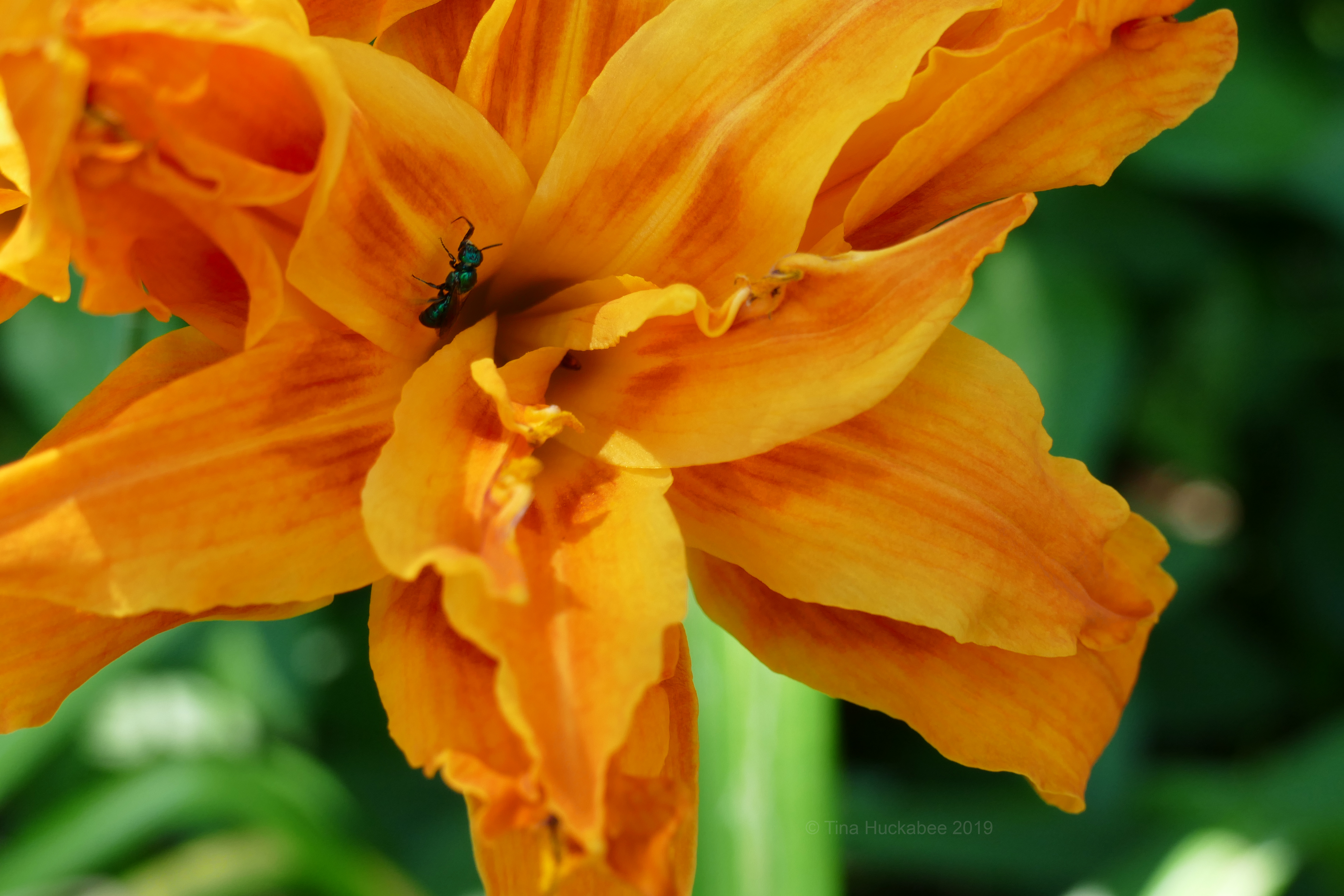
The Purple coneflowers, Echinacea purpurea, opened for business in May, but have achieved their zenith of beauty in June.

An excellent pollinator plant, there’s always something working these happy flowers, like this Pipevine Swallowtail, Battus philenor. I wonder if Ms. White flower spider is sizing up the butterfly for a meal?

Yarrow, Achillea millefolium, is a pretty plant year-round, mostly due to its foliage. But in May, it sends up flower stalks and by June, those stalks are topped off with white flower clusters, adding their particular charm to bright June days.
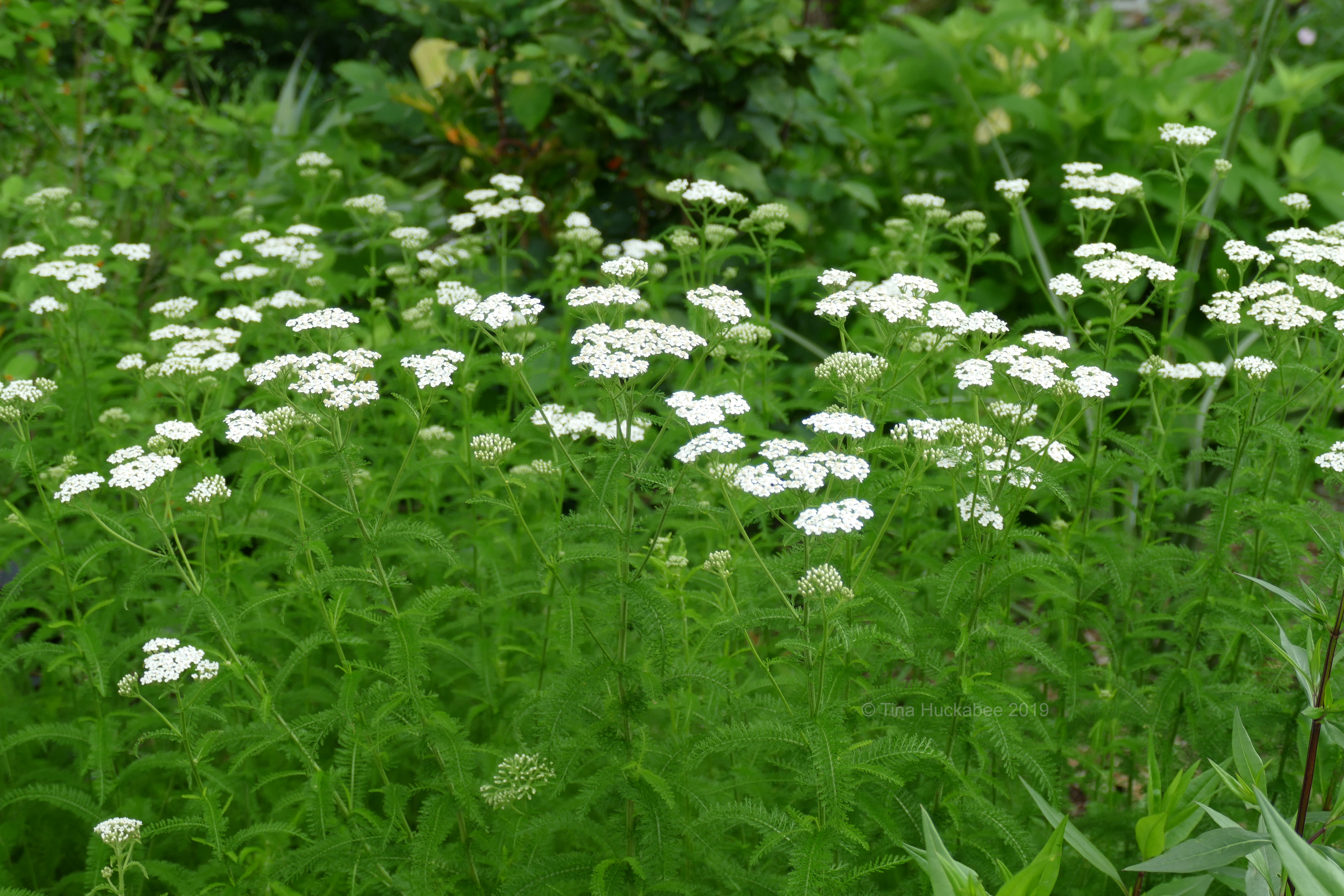
I’ve seen all sorts of pollinators at Yarrow, from common, everyday flies, (great pollinators!),

…to large, dramatic bees, like this Horsefly-like Carpenter bee, Xylocopa tabaniformis.
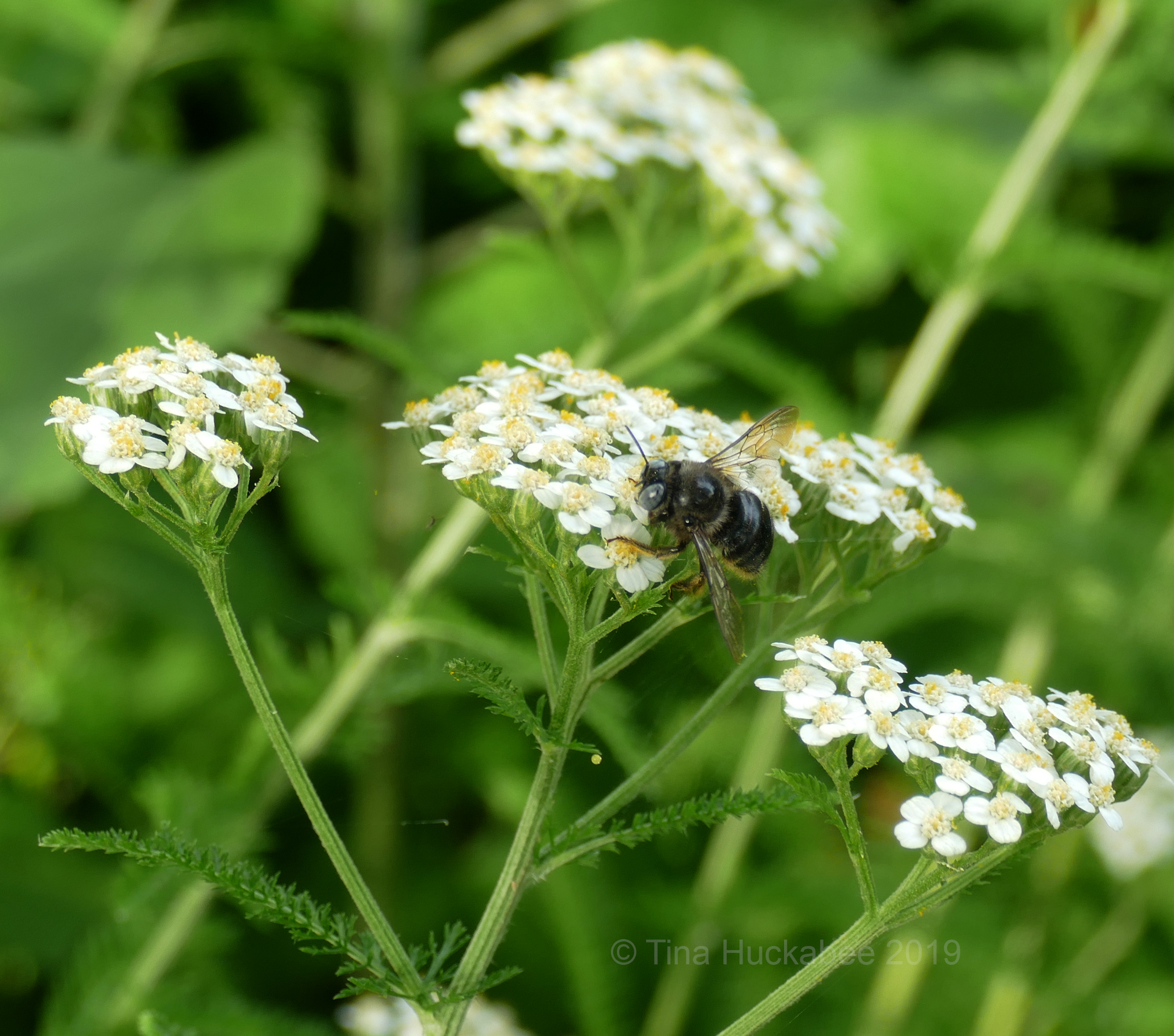
By mid-July, the snowy blooms will turn toasty, and will then attract little finches and sparrows who flit through the garden.
Barbados cherry, Malpighia glabra, a hardy Texas native, serves as a privacy screen in my front garden. It’s a large shrub which may be hedged, though I prefer its natural shape of arching branches. After rains, the plant bursts full of sweet pink flowers, eventually producing, juicy, red fruits favored by birds and mammals. The fruits are called acerola cherries and are used to make juice. I’ve tasted the fruits and they are sweet, though it would take quite a few to squeeze into juice.
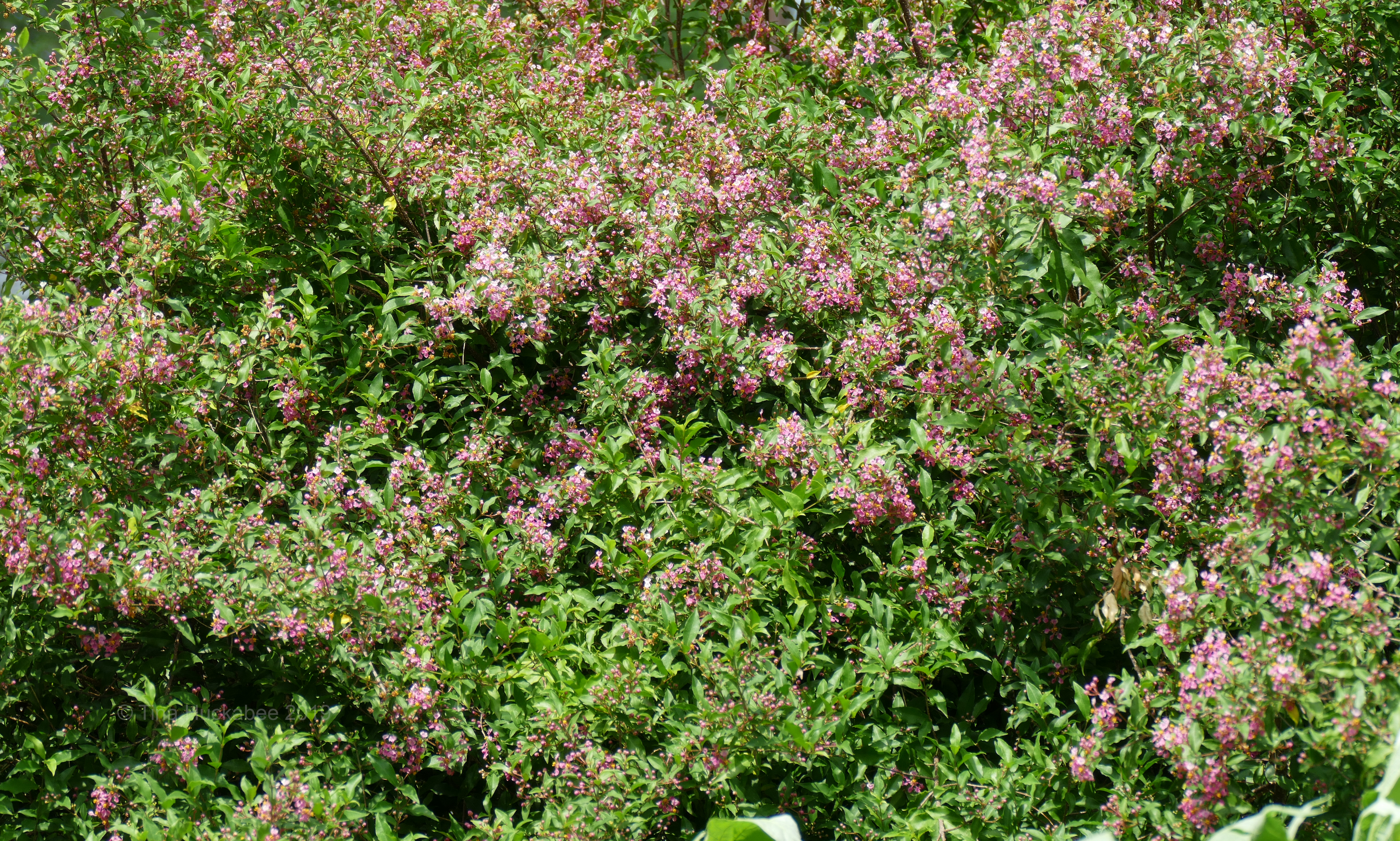
The pink flowers are small and dainty, borne in clusters along the branches.

Eastern Carpenter bees, Xylocopa virginica, visit whenever the blooms appear. These bees are fast fliers–I was lucky to get this shot!

Zexmenia, Wedelia acapulcensis var. hispida, provides a sparkle of yellow in my garden. A low growing, deciduous shrub, Zexmenia loves abusive heat and blooms best in the heat. In fact, with our wet late spring, mine haven’t bloomed quite as well as usual, though the yellow still sparkles-up the garden. The yellow flowers are companionable with many plants.

Another flower which attracts many types of pollinators, it’s also a host plant for three different butterfly species: Bordered Patch, Sierran Metalmark, and Lacinia Patch.
Here a Ceratina bee sips nectar. It looks like others before it have nibbled at the petals.

Pretty in pink are Rock rose, Pavonia lasiopetala. Another shrub with twinkly flowers, I utilize Rock rose as a staple plant in my garden. It grows and blooms in shade or sun (better in sun), and is a tough customer in our long, hot summers. I prune it back a few times during the growing season as it blooms best on new wood and will seed out prolifically if allowed. I like this little shrub planted in a mass to amplify the its pink power!
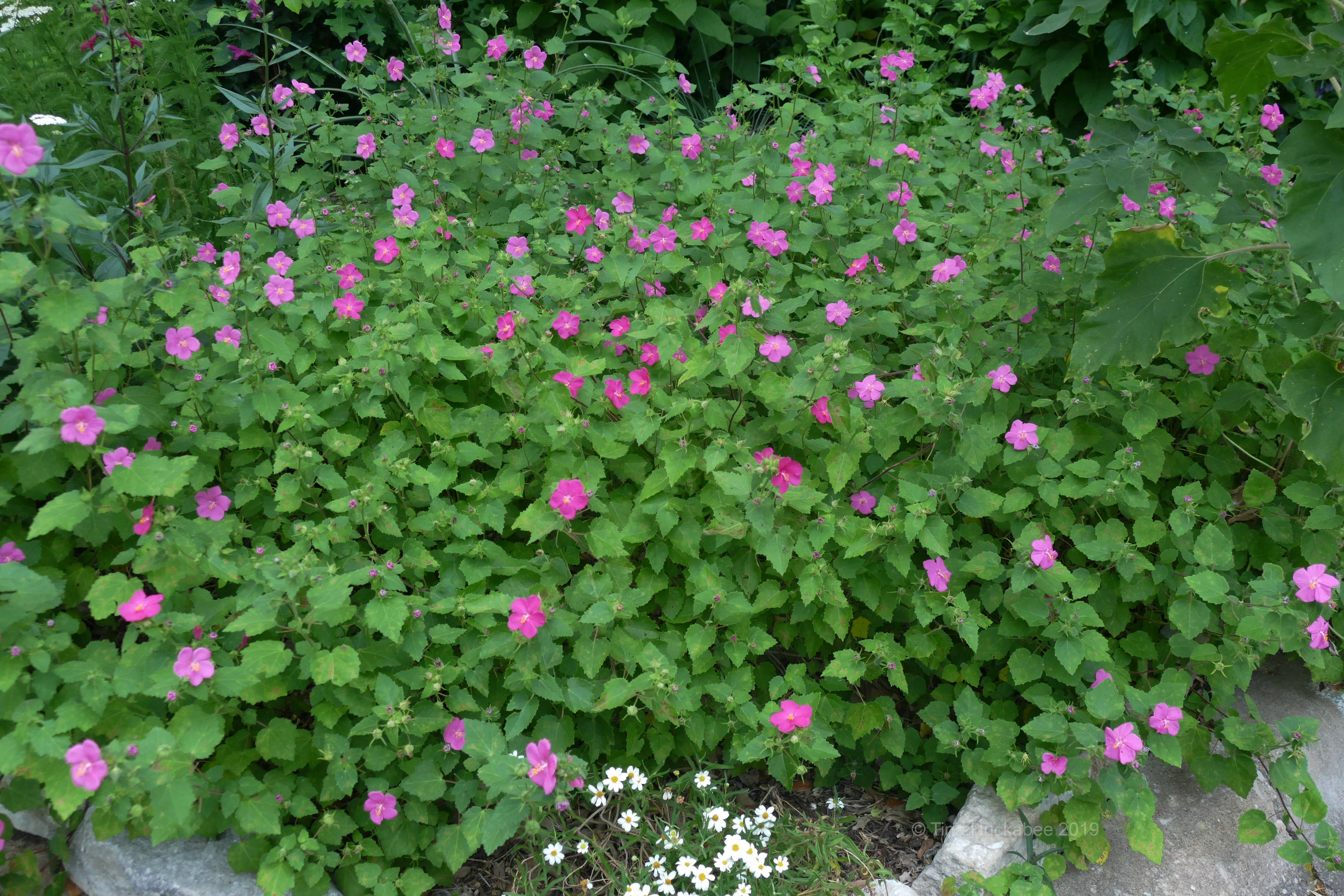
Small, hibiscus-like blooms are favored by pollinators like this Grey Hairstreak, Strymon melinus.

Red yucca, Hesperaloe parviflora, is no yucca, but in fact a gorgeous plant in the Agavaceae family. From late April until late October, Salmon-pink, tubular flowers with creamy yellow interiors, adorn tall, arching bloom stalks.

The base of the plant is fleshy, dark foliage and a nice structural element, especially in winter; the showy blooms are a cherry on top. Typically, I can’t look at these flower stalks without seeing some pollinator going about its business: bees of several varieties, some smaller butterflies, and hummingbirds are all are drawn to Red yucca. Alas, I seem to have missed catching any pollinator in my recent photos. Drat!

Late spring blues segue–just for a bit–into June with Heartleaf skullcap, Scutellaria ovata ssp. bracteata. A perennial groundcover, which is low to the ground during late autumn and winter, the plant rockets upwards in spring, developing beautiful lavender-blue flowers, which make gardeners swoon,

…and bees work.
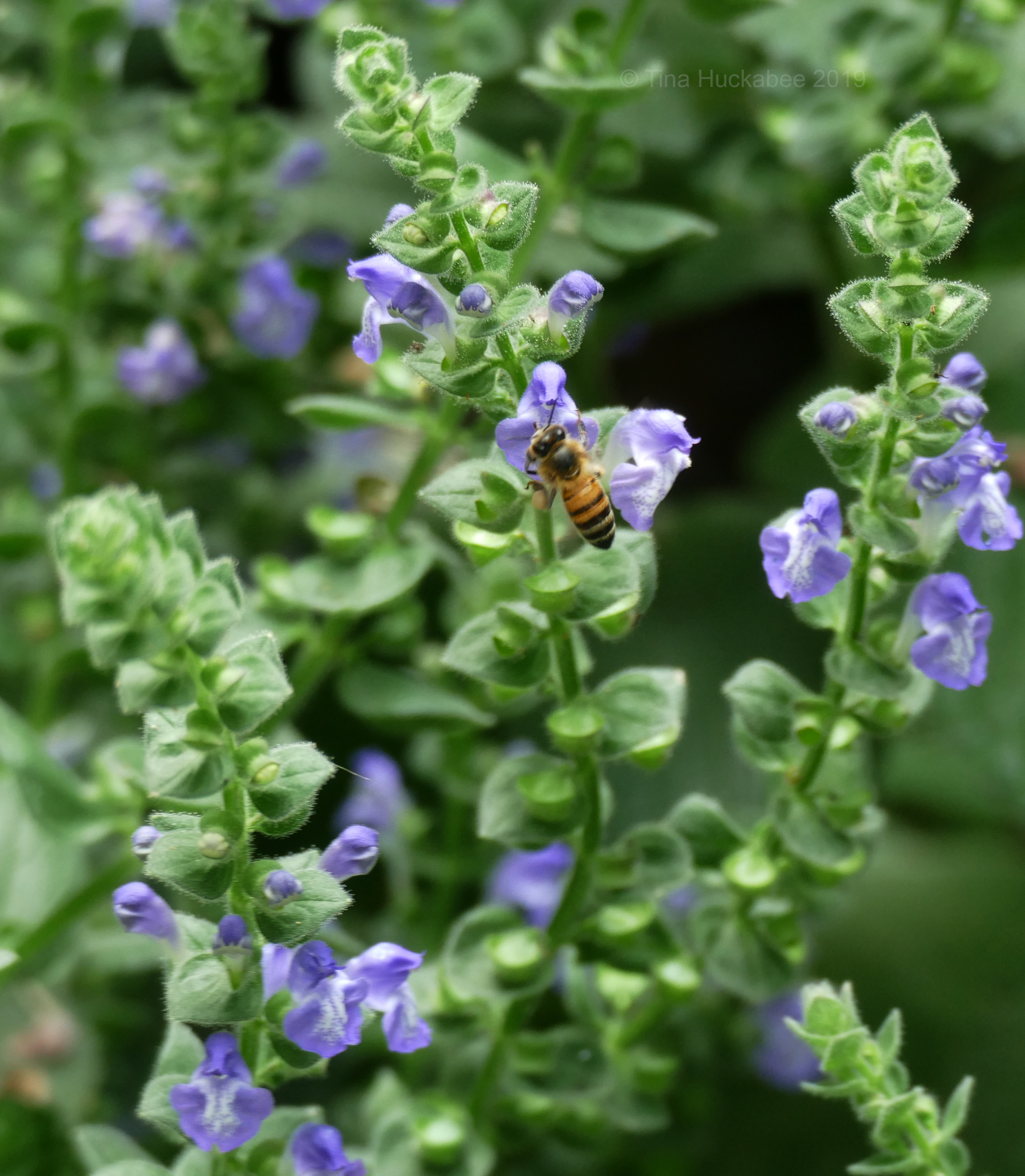
The foliage is a lovely blue-grey, soft and slightly sticky, but a perfect partner for the salvia blooms.
I like oregano–a lot. Pollinators like oregano (and other herbs) blooms–a lot. The teeny-tiny, frothy white flowers of oregano are in full bloom mode right now and pollinators are all over them.
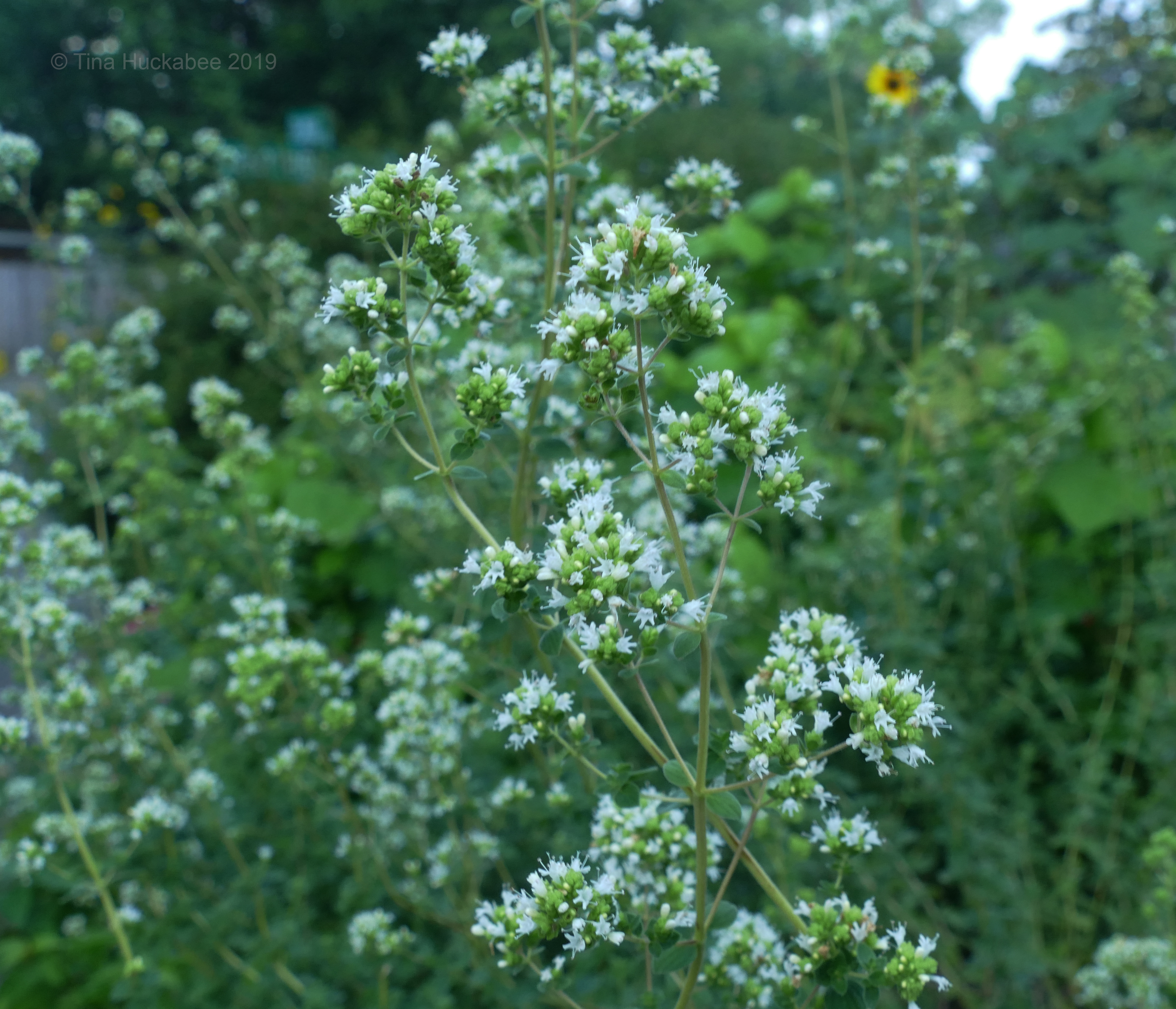
My honeybees are especially fond of oregano flowers. I wonder if their oregano-derived honey can be used on pizza?

Big red sage, Salvia penstemonoides, started blooming this month and will bloom throughout summer. My camera doesn’t quite catch the beauty of the magenta coloring of this salvia flower, but it’s a show-stopper. Native only to the Edward Plateau of Central Texas, this plant was thought to be extinct, but was then discovered blooming in south Austin in the 1980s. Fortunately for Austin gardeners, it’s easy to grow from seed and some local nurseries have made plants available.

During its summer blooming period, hummingbirds, mostly female Black-chinned and Ruby-throated, visit mine.

Happy June blooms and many thanks to Chloris of The Blooming Garden and her celebration of monthly blooms. This ends National Pollinator Week here in the United States. Readers from elsewhere–you were probably wondering why I was beating the pollinator drum! Gardeners are usually close to and aware of their environment, so I’m probably preaching to the choir, but if you don’t plant for pollinators–do! You’ll be amazed at who shows up and pleased at how pollinators and all wildlife bring life to your garden.

From left to right: Red Yucca, Yarrow, Rock Rose, Big Red Sage.




